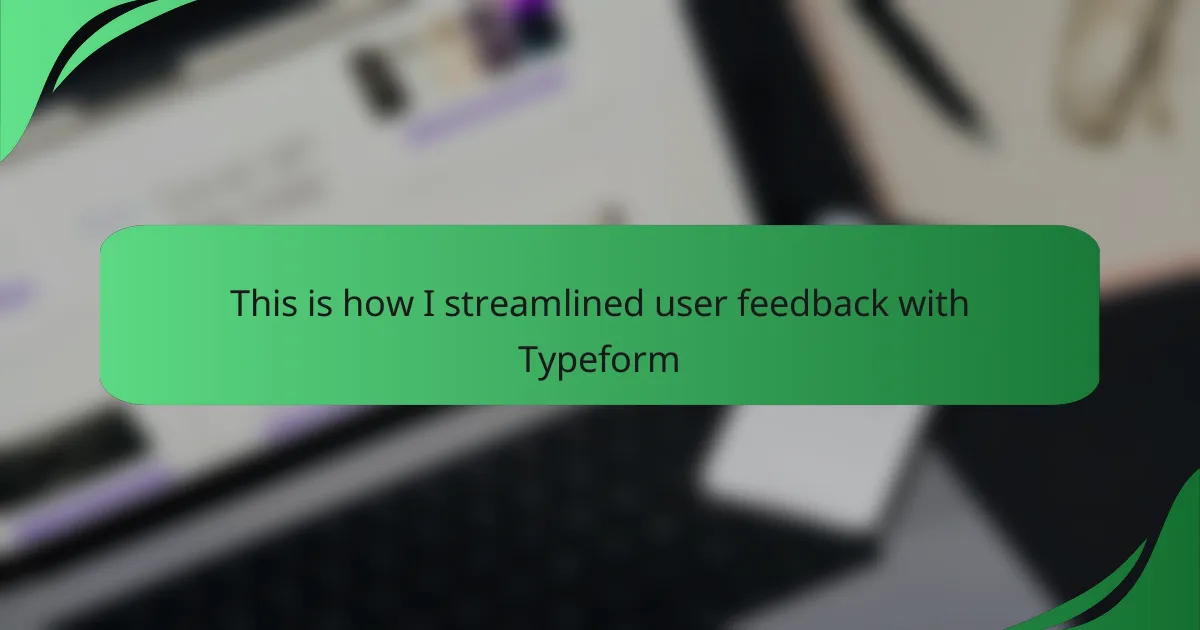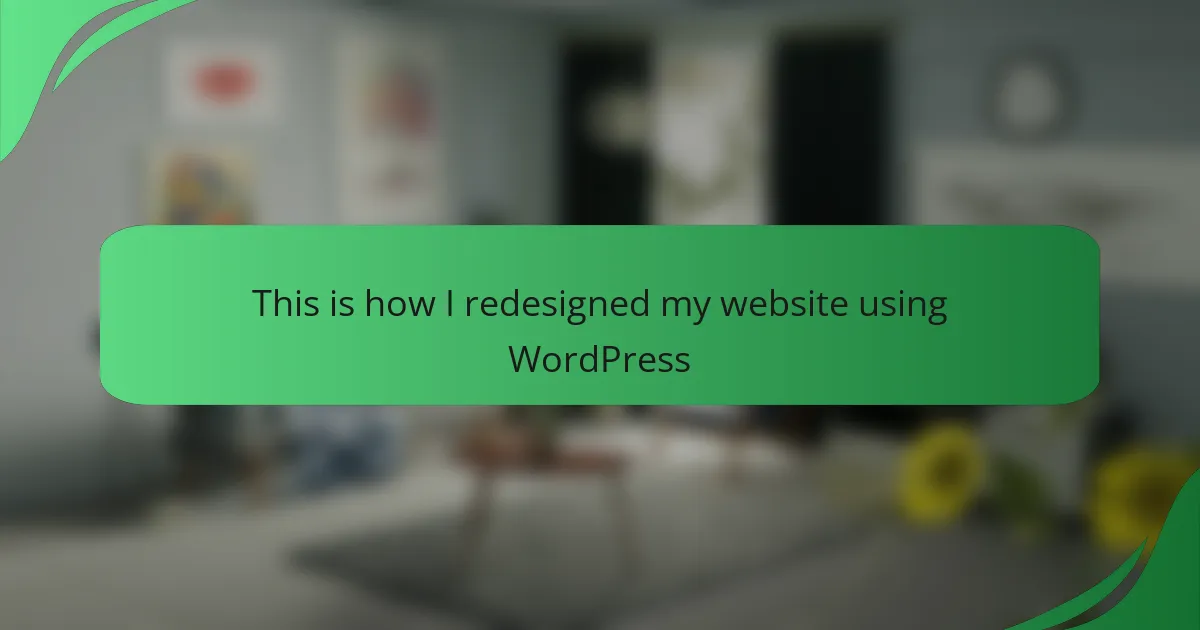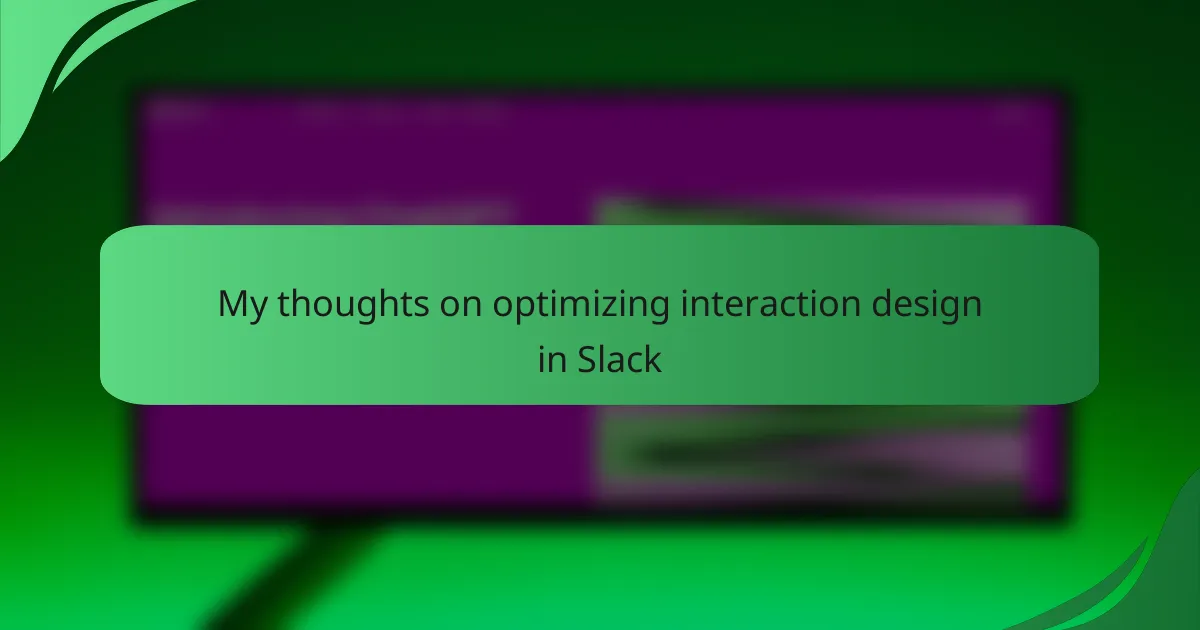Key takeaways
- Effective interface interaction design enhances user satisfaction by simplifying navigation and addressing user needs.
- Strong onboarding processes foster user confidence, reduce churn rates, and transform users into loyal advocates.
- Challenges such as information overload and lack of personalized guidance can hinder effective onboarding experiences.
- WalkMe tools, including interactive guides and analytics, significantly enhance onboarding by providing tailored support and data-driven insights.
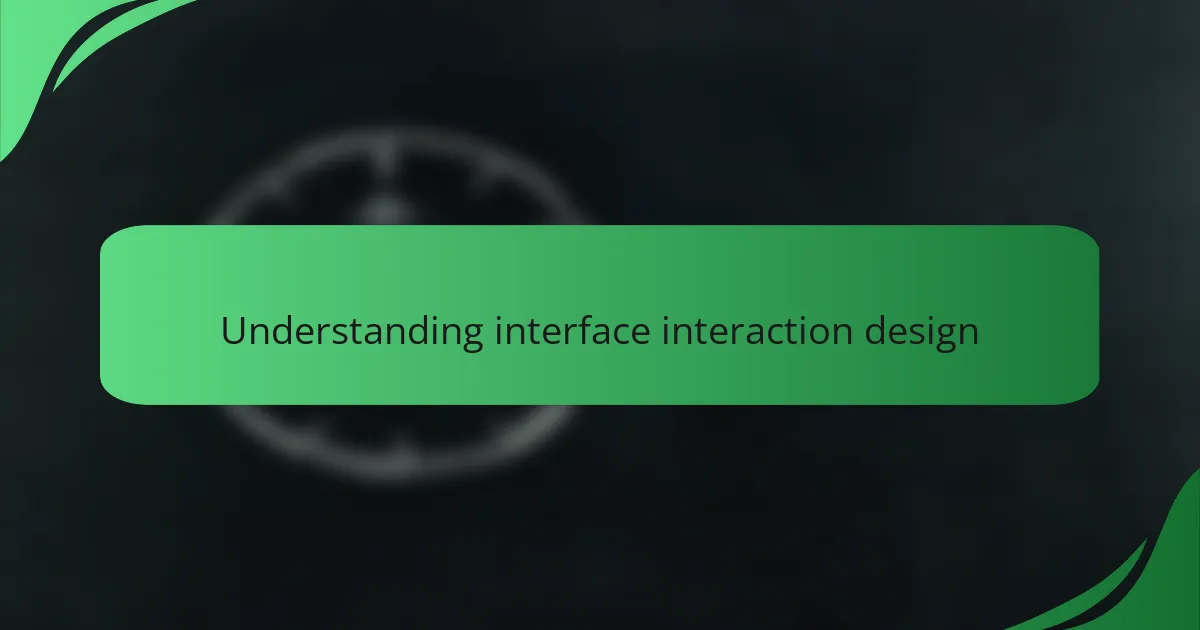
Understanding interface interaction design
Interface interaction design is all about creating a seamless experience for users. I’ve always believed that when you design an interface, you’re not just building a tool; you’re crafting a journey. Have you ever felt lost trying to navigate a confusing app? That’s what good design seeks to eliminate.
In my experience, intuitive interaction design directly impacts user satisfaction. I remember a project where we revamped a landing page. By simplifying the layout and streamlining the navigation, we saw a noticeable uptick in user engagement. It’s fascinating how seemingly small changes can lead to big results.
Understanding users’ needs is the cornerstone of effective interface interaction design. I often ask myself, “What would I want if I were in the user’s shoes?” This mindset helps me develop features that resonate with users, providing them with a clearer path and ultimately enhancing their overall experience.

Importance of effective onboarding
Onboarding is crucial because it sets the tone for the entire user experience. I vividly recall a situation where a product’s onboarding process was so convoluted that I felt like I was running in circles, which dampened my enthusiasm. Isn’t it frustrating when you’re eager to use something new, only to be faced with a steep learning curve?
When onboarding is effective, it fosters a sense of confidence in users. I’ve had the pleasure of watching users transition smoothly from confusion to clarity when they’re guided step-by-step through new software. It’s like giving them a map to explore uncharted territory; suddenly, they feel empowered instead of lost.
Moreover, a strong onboarding experience can significantly reduce churn rates. In my work, I’ve seen how users who feel supported from the get-go are more likely to stick around. Doesn’t it make sense that when people feel comfortable and confident in using a product, they’re more likely to continue their journey? Engaging onboarding transforms users into loyal advocates instead of frustrated drop-offs.
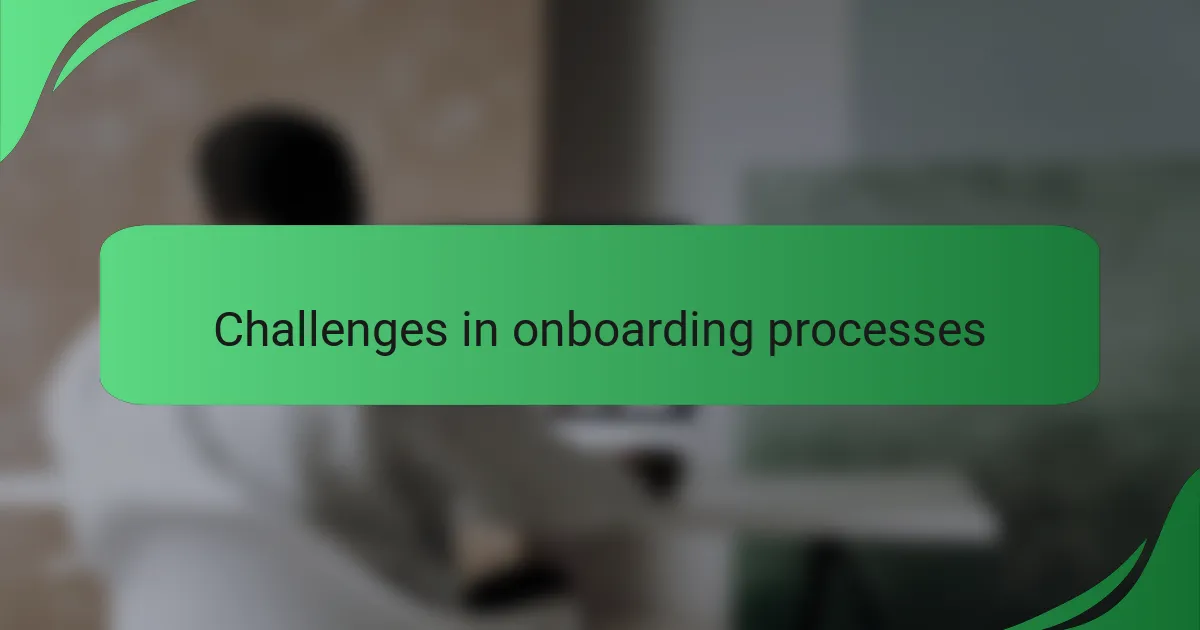
Challenges in onboarding processes
In my experience, onboarding processes can often feel overwhelming for new users. I remember the first time I encountered a complex software platform; I felt lost and frustrated due to the flood of features and options presented all at once. This feeling is quite common and highlights a significant challenge in onboarding: ensuring that users don’t become discouraged before they fully understand how to navigate the interface.
Another challenge I’ve faced is the lack of personalized guidance. Each user has different needs and learning paces, which can lead to a one-size-fits-all approach that doesn’t serve everyone effectively. I often think about how I wish there were tailored tips during my initial attempts at using new software. Users benefit greatly from receiving targeted information that resonates with their unique experiences.
- Information overload can confuse users.
- One-size-fits-all training doesn’t meet individual needs.
- Lack of engagement leads to lower retention rates.
- Insufficient support during onboarding leaves users feeling abandoned.
- Limited feedback mechanisms make it hard to learn from user experiences.

Overview of WalkMe tools
WalkMe offers a range of tools designed to enhance user onboarding and streamline the overall experience. Based on my experience, the platform’s capabilities are versatile, allowing organizations to create interactive guides, provide on-screen assistance, and analyze user engagement effectively. I’ve seen firsthand how WalkMe’s features can transform a complex onboarding process into a seamless journey for new users.
One of the standout tools is the WalkMe Editor, where I’ve built customized walkthroughs that address specific user needs. The data analytics tool is equally impressive, providing insights into user behavior that have informed improvements in our onboarding strategy. This built-in capacity for feedback has been a game changer, making it easy to adapt processes to better serve users.
Here’s a quick comparison of some of the core tools offered by WalkMe:
| Tool | Description |
|---|---|
| WalkMe Editor | Create customized onboarding experiences with interactive guides. |
| Analytics | Analyze user behavior to inform enhancements and track progress. |
| Task Autocomplete | Automate user tasks by guiding them through common workflows. |
| Smart Walk-Thrus | Provide step-by-step instructions for navigating complex features. |
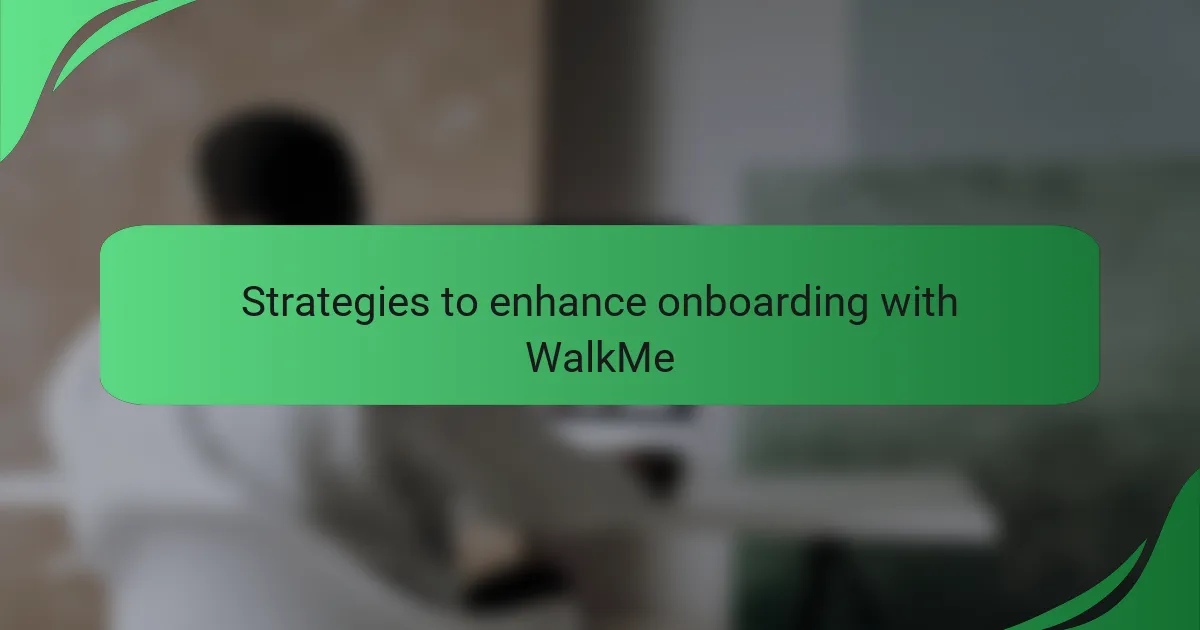
Strategies to enhance onboarding with WalkMe
WalkMe can significantly enhance onboarding processes by incorporating personalized walkthroughs tailored for each user’s journey. When I started using WalkMe, I quickly realized how effective it was to create guides that anticipated user questions and concerns. Have you ever wished for help at just the right moment? That’s what these tailored experiences deliver, ensuring users feel supported every step of the way.
Another strategy I’ve found useful is leveraging data analytics to refine onboarding continuously. By analyzing user interactions, I’ve been able to pinpoint stumbling blocks within the onboarding experience. It’s like having a roadmap that reveals where users are getting stuck. Isn’t it empowering to make data-driven adjustments that can lead to smoother transitions and happier users?
Lastly, integrating task automation frees up users to focus on actually using the product rather than getting bogged down with manual steps. I remember how tedious repetitive training tasks felt before automating them through WalkMe. By streamlining these common workflows, users can achieve their goals more effortlessly, fostering a sense of accomplishment that keeps them engaged. It’s amazing how a simple change in approach can ignite a user’s passion for learning.
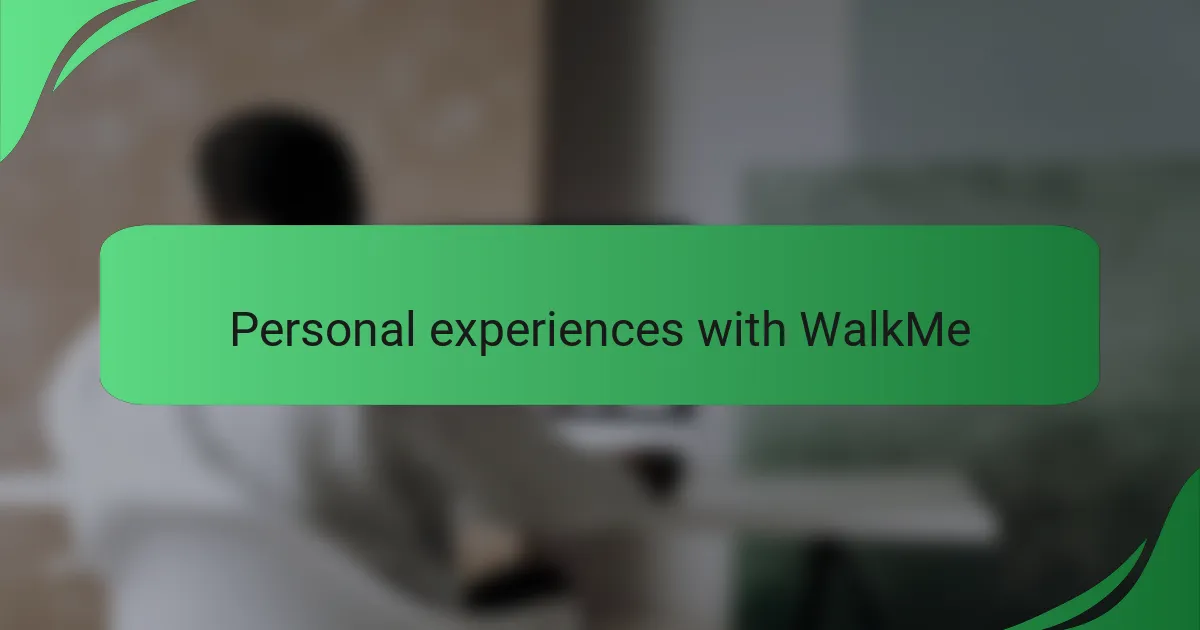
Personal experiences with WalkMe
When I started using WalkMe, I expected just another tool, but it became an essential part of my onboarding strategy. At first, the implementation seemed overwhelming, but as I dove deeper, I found it incredibly intuitive. I remember how excited my team was when we launched our first WalkMe walkthrough—everyone was engaged, and the feedback was overwhelmingly positive.
One of the most impactful features I’ve utilized is the insights dashboard. It has provided me with data on user interactions that was previously just a guess. Seeing where users hesitated or struggled allowed me to refine our processes continuously. Here’s how WalkMe has truly transformed my onboarding experience:
- Enhanced user engagement through interactive walkthroughs.
- Increased clarity with tooltips that guide users step by step.
- Access to comprehensive analytics to track user progress and identify pain points.
- Ability to customize content based on user roles, making onboarding more relevant.
- Reduction in support tickets related to onboarding questions, boosting team morale.


